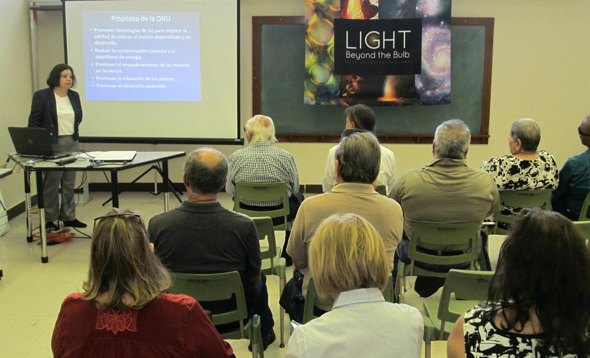Light
24 Hours of Light
Light is something we experience every day. For most people, "light" refers to what humans can detect with our eyes. It is illumination, what ignites our visual sense, the yin to the yang of dark. However, the type of light humans can detect with our eyes is just a small fraction that exists, and the true nature of light is much more expansive.
In many ways, light behaves like a wave and this is the key to understanding its amazing capabilities. How tightly packed — or far apart — the waves are dictates light's properties. For example, the longer the wave, the less energy the light typically carries, and vice versa. Each type of light has its own "super powers" both in their natural forms and in ways sculpted by science and technology.
Picture a piano keyboard. The popular definition of light would inhabit a few keys around middle C, while the rest of the piano represents the full breadth of light and its many forms. On one end of the piano of light, there are radio waves. As you move up through the octaves, there are other forms of light including microwaves, infrared, "visible" light, ultraviolet, X-rays, and gamma rays.
Light: Beyond the Bulb at Puerto Rico
During the month of April 2015 the Chandra exhibit "Light: Beyond the Bulb" for the International Year of Light was displayed at the main library of the University of Puerto Rico (UPR) and impacted many hundreds of visitors. The exhibit was announced to the public using different media with the support of the Communications Office at the UPR. Dr. Gloria Isidro (Caribbean University) organized special talks at Caribbean University of Bayamón in which hundreds of students, faculty and staff participated (April 8th and 9th, 2015). These talks included a description of the goals of the International Year of Light 2015, announced the exhibit of images at the University of Puerto Rico during the month of April and showed a video of the "Light: Beyond the Bulb" exhibit.

Light: Going Beyond the Bulb
2015 has been declared the International Year of Light and Light-based Technologies (#IYL2015) by the United Nations. Working for NASA’s Chandra X-ray Observatory, a space-based telescope that observes X-rays from the Universe, we talk about light all the time. X-rays are a kind of light. There are many different kinds of light that make up the electromagnetic spectrum, from radio waves to gamma rays, but only one that human eyes can detect naturally (known as optical, or visible, light).

Caption: This illustration shows the full range of the electromagnetic spectrum, in order of increasing frequency or energy, from radio waves, to microwave, to infrared, to visible or optical, to ultraviolet, to X rays, to gamma rays.
Image file: https://lightexhibit.org/images/featured/about_light.jpg
Image Credit: NASA/CXC/M.Weiss

